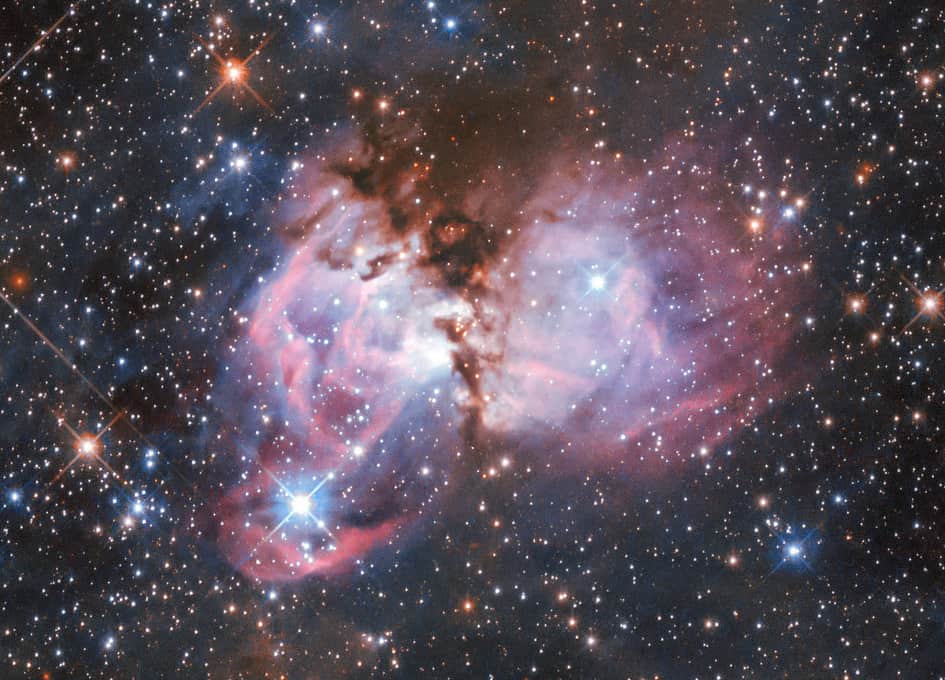The Cosmos with LHA 120-N 150
This scene of stellar creation, captured by the Hubble Space Telescope, sits near the outskirts of the famous Tarantula Nebula, the largest known stellar nursery in the local universe.
Called LHA 120-N 150, this cloud of gas and dust, along with the many young and massive stars surrounding it, is the perfect laboratory to study the origin of massive stars. The nebula is situated more than 160,000 light-years away in the Large Magellanic Cloud, a neighboring dwarf irregular galaxy that orbits our galaxy, the Milky Way.
Also known as 30 Doradus or NGC 2070, the Tarantula Nebula owes its name to the arrangement of bright patches that somewhat resemble the legs of a tarantula. It measures nearly 1,000 light-years across. Its proximity, the favorable inclination of the Large Magellanic Cloud, and the absence of intervening dust make the Tarantula Nebula one of the best laboratories in which to study the formation of stars, in particular massive stars. This nebula has an exceptionally high concentration of massive stars, often referred to as super star clusters.
Astronomers have studied LHA 120-N 150 to learn more about the environment in which massive stars form. Theoretical models of the formation of massive stars suggest that they should form within clusters of stars; but observations indicate that up to ten percent of them also formed in isolation. The giant Tarantula Nebula with its numerous substructures is the perfect laboratory in which to resolve this puzzle as in it massive stars can be found both as members of clusters and in isolation.
